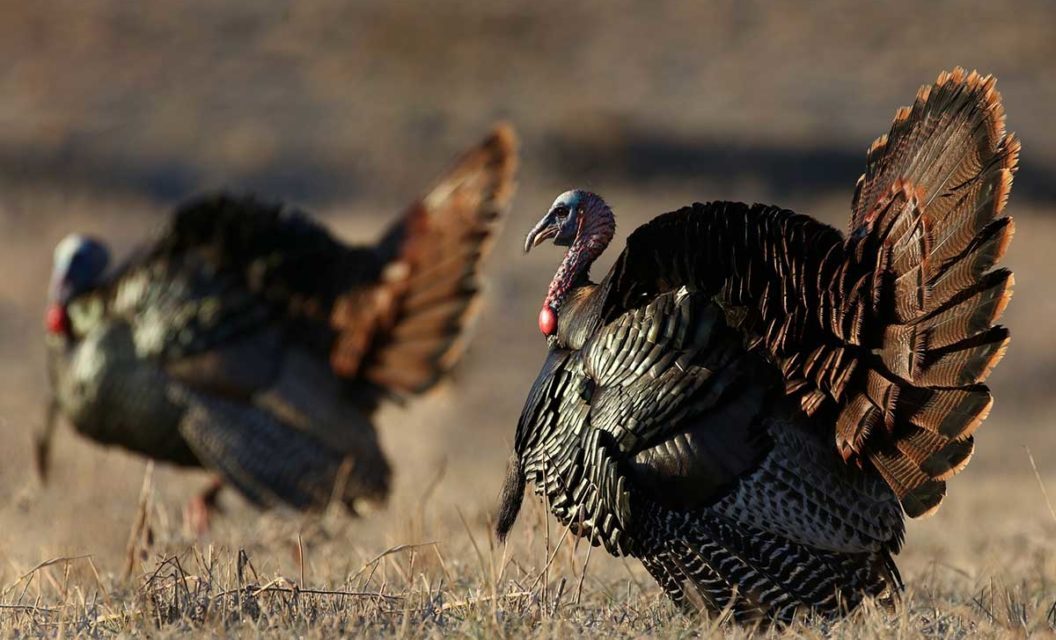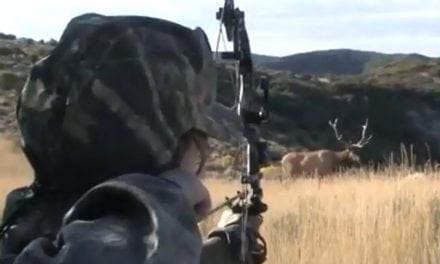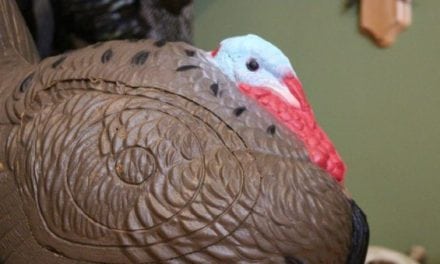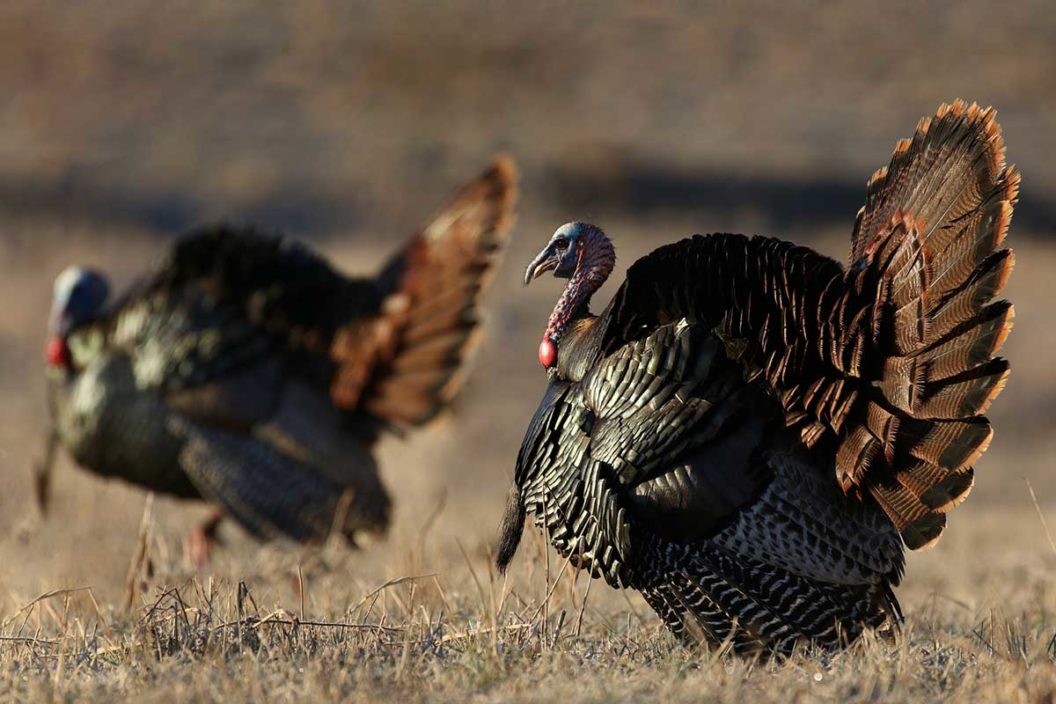
Fall is an exciting season. College football, rutting whitetails, and early season ducks consume our thoughts and our time. With all the thongs to do, watch, and enjoy, it’s easy to forget about North America’s favorite game bird–the wild turkey. While this game animal is usually pursued primarily in the spring due to the more aggressive and easily callable Toms that time of year, success can still be found throughout the later half of Autumn. Some would even say fall turkey hunting is more enjoyable in some ways. For one, in almost every state with a fall turkey season, either sex is fair game. Hunters won’t have to keep holding off for that stubborn Tom to get within shooting range. Hens have now parented their poults for the past four months and are starting to separate, finally giving hunters their annual shot at harvesting these beardless birds.
However, fall turkey hunting comes with its own set of challenges. The birds aren’t quite as willing to investigate calling, and locating turkeys won’t be as easy as just sounding off a few clucks and waiting for a gobble. Here are some tips for how I have found success hunting this beloved bird in the fall season and into the early winter.
Locate Food
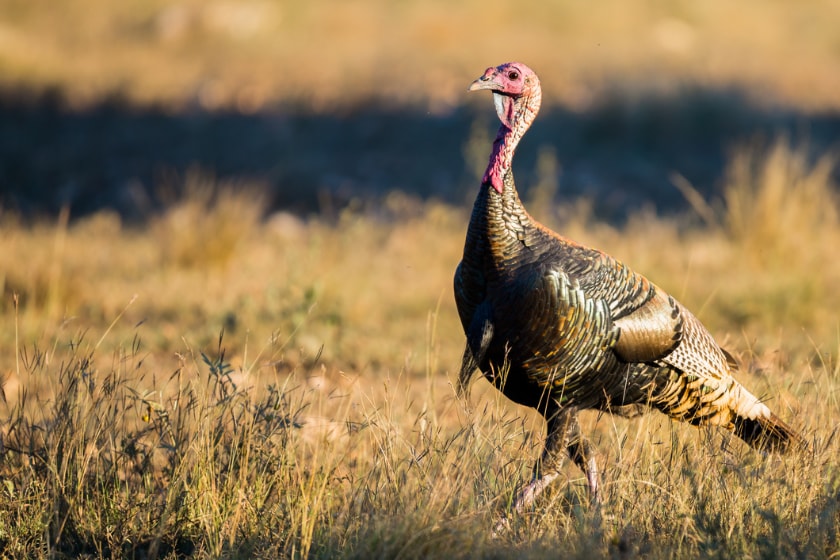
You may not be able to entice a turkey through the power of love, but the next best way is through their stomachs. During the fall, a turkey’s sole focus is on food as they prepare for the scarcity of winter. Places like harvested ag fields, food plots, and oak ridges are all key areas to put your focus on for fall hunting. Baiting turkeys is illegal in many states, so check your local and state regulations to ensure that you’re following all hunting laws. If it is allowed, baiting can certainly be a great fall tactic, but in states such as Ohio or Florida, it is illegal to harvest a turkey within 100 yards of any bait.
Scout Heavy
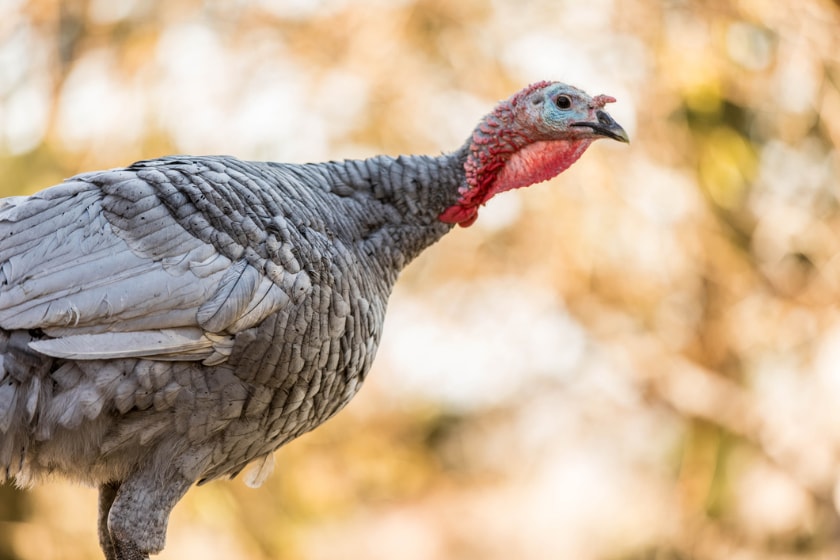
If you thought scouting during the spring season was crucial for turkey hunting success, be prepared to step it up for fall hunting. It is the best way to find a perfect setup for a fall hunt, as it will be much harder to locate a vocal turkey during the hunt. Thankfully, turkeys tend to leave large amounts of signs around to let you know that a spot is prime for hunting. When checking fields and oak patches, search for signs of turkey scat, tracks, feathers, and scratch marks in the ground (places where they’re searching around for bugs and other edibles). Turkeys tend to have a very consistent routine during the fall, so if you locate where a turkey has been, you can almost certainly count on them visiting again.
Utilize Decoys
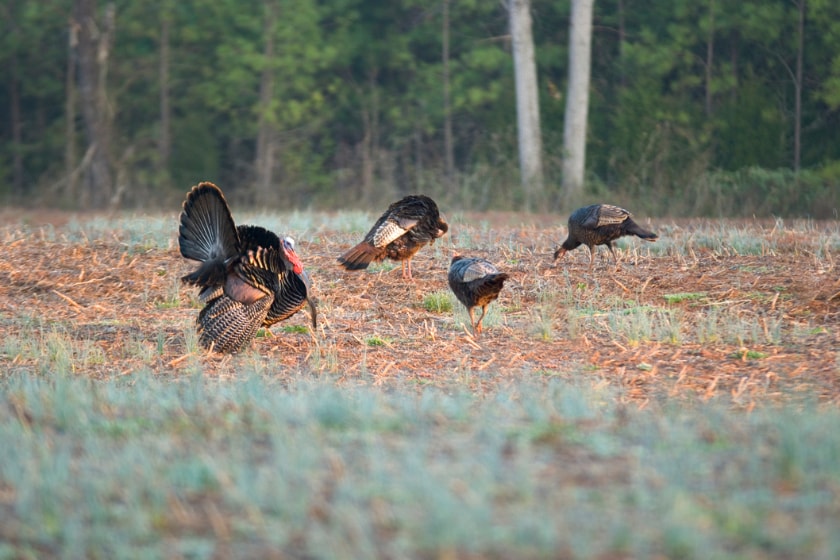
Decoys aren’t just meant for spring turkey hunting. During the fall, turkeys tend to congregate in large flocks, and for the most part, are always searching for more birds to join. A large decoy spread can encourage lone birds to join the group, allowing you to get a shot at a curious and lonely bird.
Learn Fall Calls
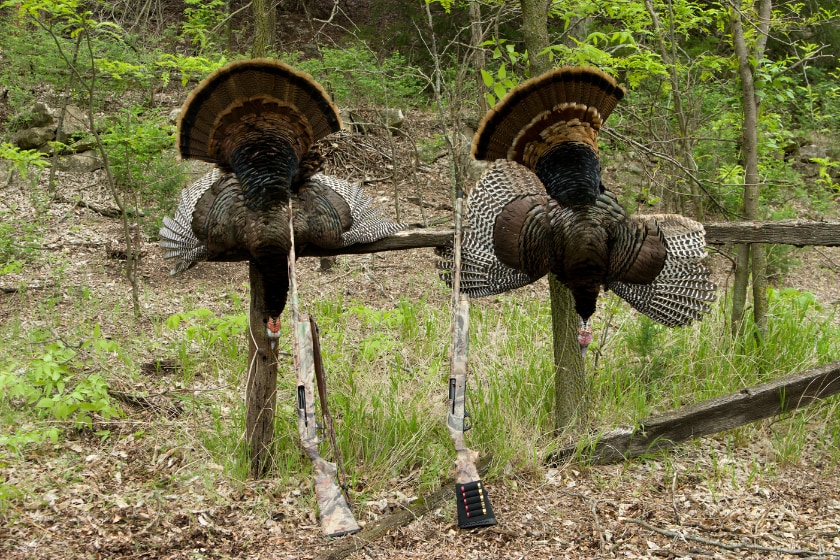
There is a common thought that turkeys don’t call during the fall. This leans towards being true, but not in its entirety. While it’s unlikely that you’ll hear the woods light up from the sound of thunderous gobbles, the fact remains that turkeys call every day of the year. Use this to your advantage by imitating a lone turkey searching for a group. One of the most popular fall turkey calls is what’s known as the kee-kee call, meant to imitate a young bird in distress because they’re lost and searching for a group of birds to join. Mastering this call will be vital to upping your success in luring birds to your set up.
Flock Bust
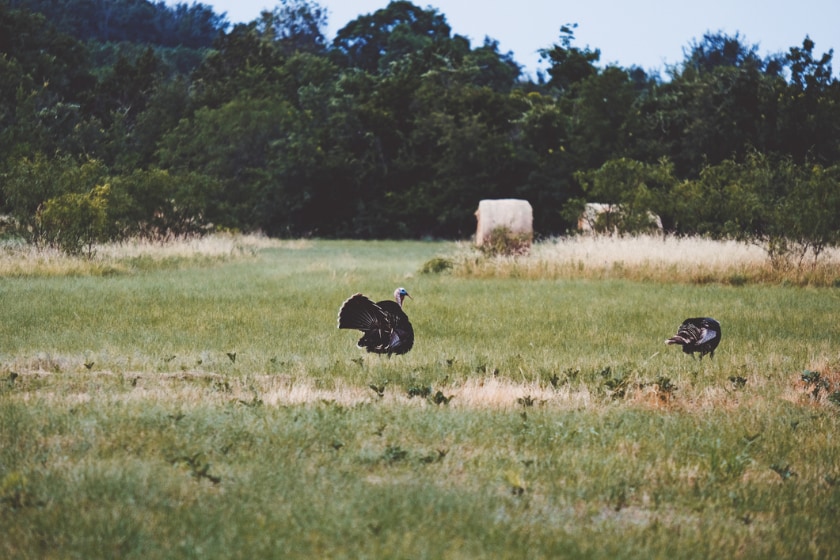
Flock-busting is a common strategy used by fall turkey hunting enthusiasts, but it comes with a great deal of risk. The general idea is to locate a large flock of turkeys grazing out in a field, and run out into the field as fast as you can in hopes of surprising the flock. One of the keys is to make as much commotion as possible to hopefully scatter the flock in several different directions, creating some confusion amongst the flock and a scattering of fleeing birds. After you have scared the flock and they have vanished in multiple directions, set up exactly where the birds were. Wait about 10 minutes or so, and then perform some kee-kee runs, as well as some soft clucks and purrs. The goal of this is to convince a scattered and lone turkey to rejoin the spooked flock, and that the coast is clear. This will likely only produce one bird, so be ready for a quick shot.
Deer Hunt With a Turkey Tag
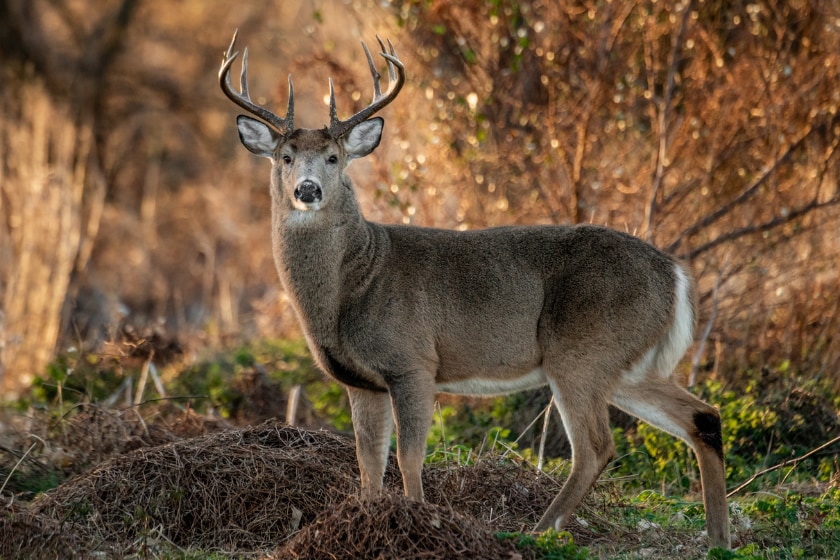
My old man used to always jokingly say, “When you’re deer hunting, you see lots of turkeys. When you’re turkey hunting, you see lots of deer.” This was clearly a shot at his own luck, but a very accurate way to tease himself and any other hopeful hunters. It seems as though whenever my focus is on harvesting a deer, I can’t help but see a flock of giant longbeards at 20 yards. Shamefully, this took me a while to figure out. But now, whenever I am in the treestand in late October or early November, looking for a cruising whitetail, I always have a turkey tag in my pack just in case one decides to show its face. Fall turkeys don’t see much hunting pressure, and bird numbers are at an annual high during the fall, so the odds of you spotting a flock of turkeys from your deer stand are pretty likely.
Fall turkey hunting doesn’t always get the credit it deserves. The unique challenges that it brings, combined with the pursuit of one of the greatest game birds on this continent, gets me just as excited as that trophy whitetail. While becoming successful in the fall takes a great deal of effort when scouting and creating a strategy, if it’s done right it’s one of my all time favorite hunts!
READ MORE: 8 of the Best Turkey Hunting Shotguns on the Market Right Now
The post How to Find Success Fall Turkey Hunting appeared first on Wide Open Spaces.

